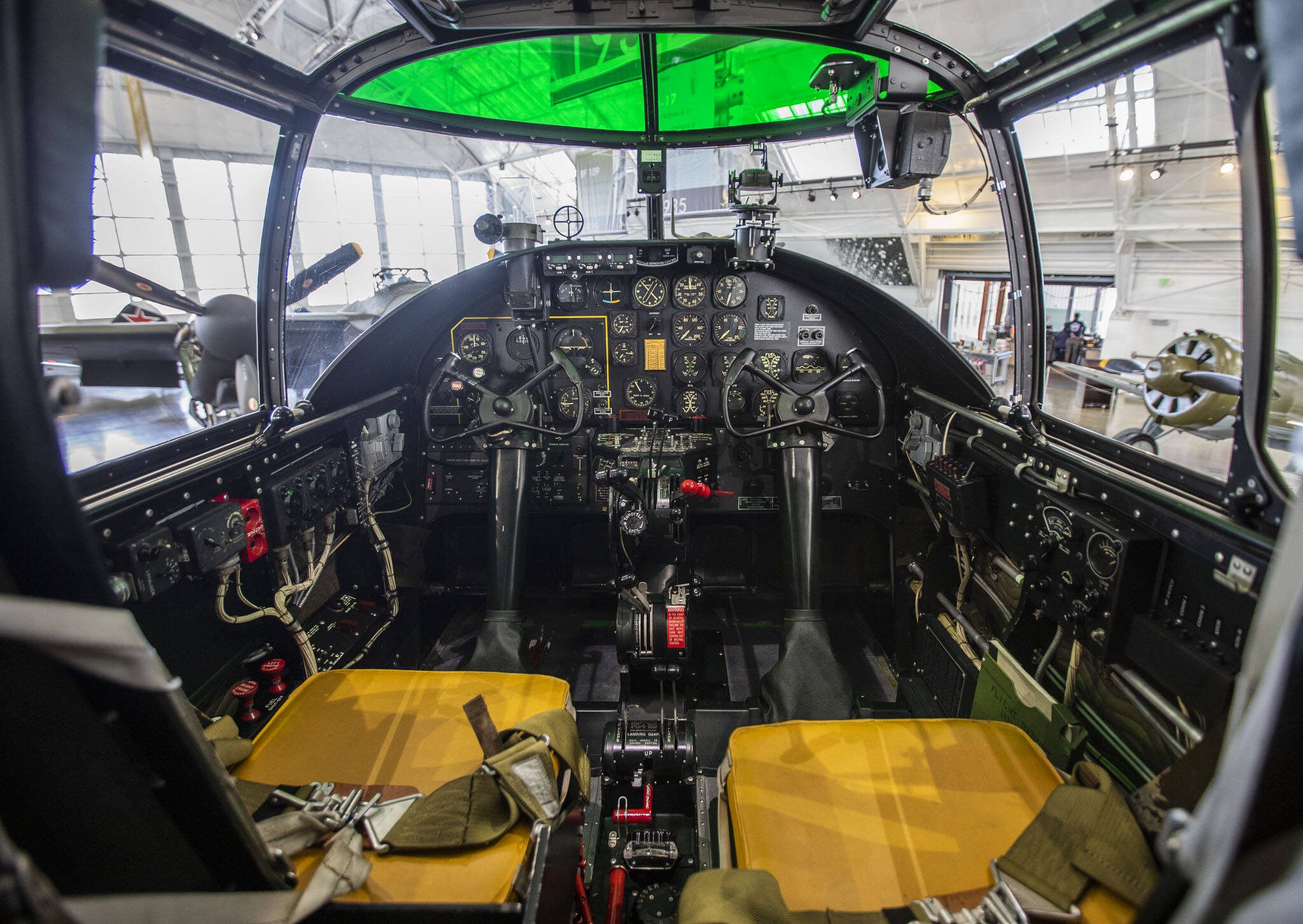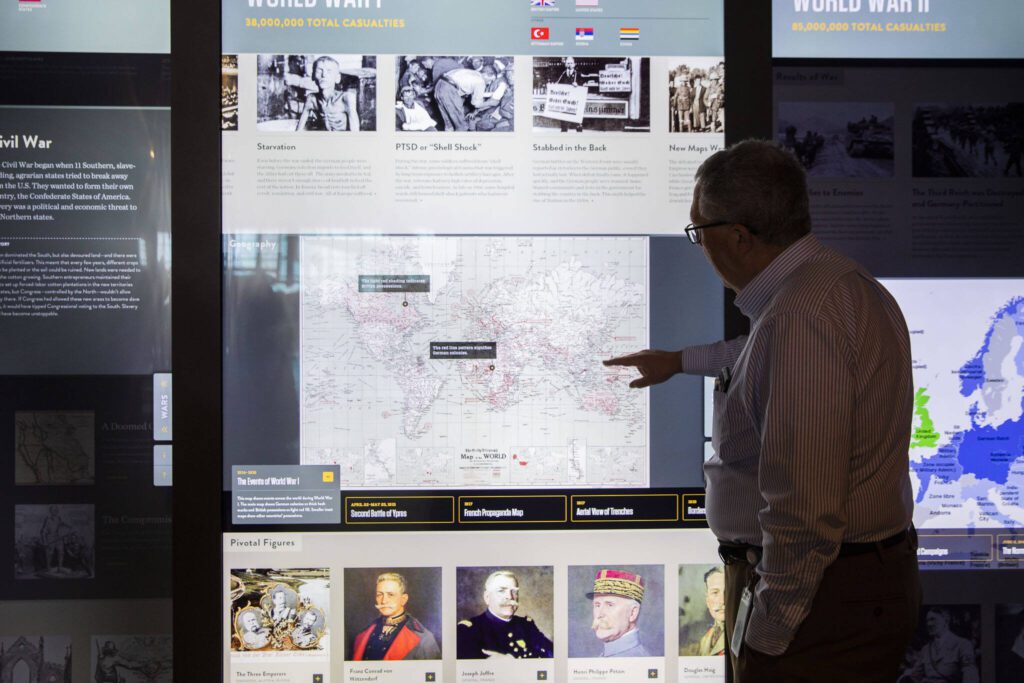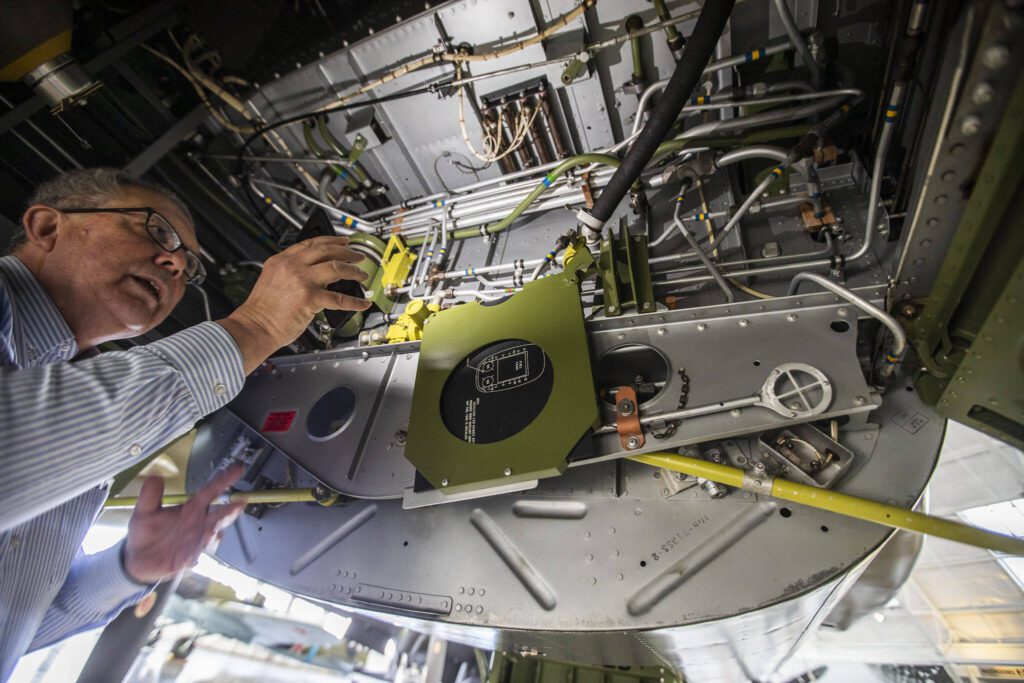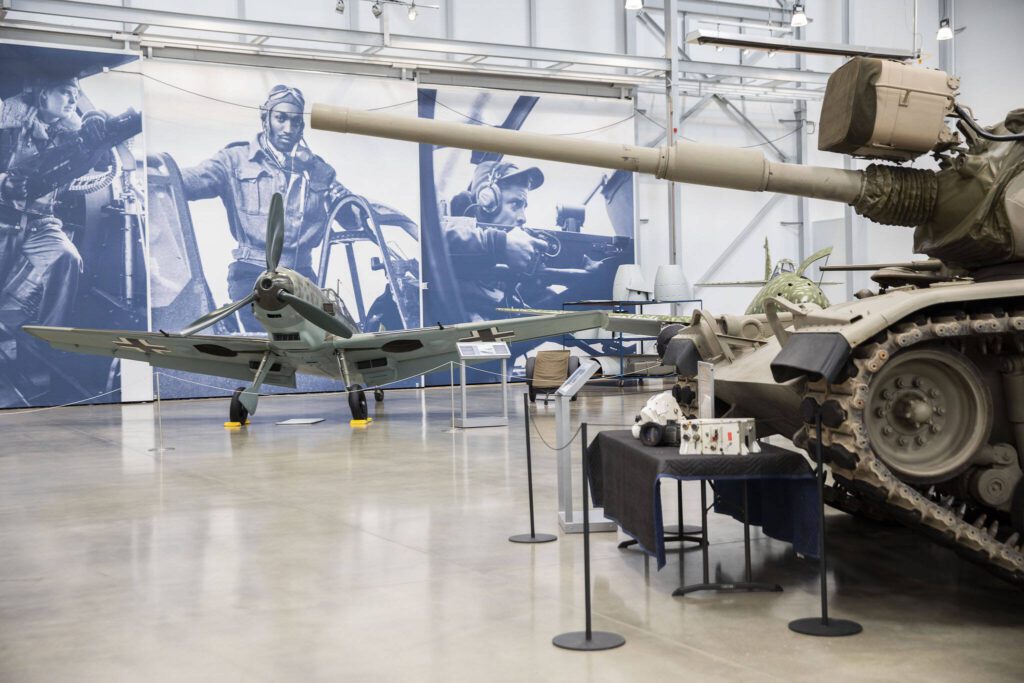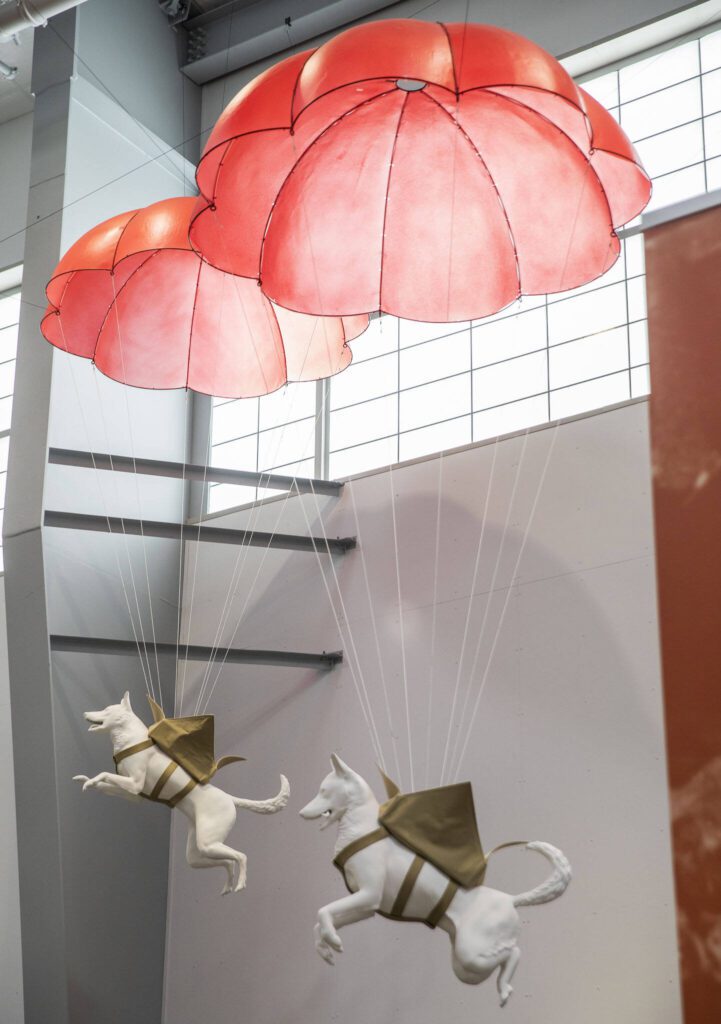During the Second World War, the British Army flew military dogs behind enemy lines to locate mines and keep watch over the soldiers.
Just like their human handlers, the dogs parachuted in.
If you’re curious to see what a paradog looks like, visit the Flying Heritage & Combat Armor Museum at Paine Field in Everett.
Stroll over to Charlie Hangar and look up at the ceiling. You’ll see five 3D printed canines dangling from five red parachutes.
They’re part of Animals of War, one of the museum’s latest exhibits.
To view an even smaller parachute, check out a display of the smallest warbirds, homing pigeons. The sturdy birds delivered thousands of messages during wartime, saving thousands of lives. They also were sometimes dropped by parachute.
READ MORE: Historic B.C. Martin Mars water bomber will fly one last time
If you think Flying Heritage should change its name to the Flying Dogs, Pigeons, Planes & Combat Armor Museum you probably won’t get much of an argument from the museum’s executive director, Adrian Hunt.
“This is not just your old plane guys’ museum,” Hunt says during a 90-minute tour of the 75,000-square-foot venue. Hunt has overseen the museum since 2007.
Many of the exhibits aim to probe, ponder and educate.
Itching to test your ability to handle an enemy attack or wartime crisis?
Try the simulators at the Why War: The Causes of Conflict exhibit, Hunt says.
But no dawdling, you’ve got only five minutes to make critical decisions and save the day. The simulator also evaluates your leadership style — Are you a dictator or a diplomat?
Giant touchscreens offer documents, maps and photographs of America’s major conflicts from the Revolutionary War to the 1990 Gulf War. The exhibit includes life-size replicas of the two Atomic bombs, Little Boy and Fat Man, dropped on Japan during the Second World War.
A Paine Field favorite since 2008, Flying Heritage is a showcase for Second World War and Cold War military aircraft and vehicles from the United States, Great Britain, Germany, Japan and the Soviet Union.
“It’s an absolutely fabulous collection,” says Kerry Edwards, a Cascade Warbirds board member. The regional group promotes the preservation and public display of historically significant military aircraft. “Many are unique, one-of-a-kind airplanes that can’t be seen anywhere else in the world.”
Its beginnings trace to the 1990s, when Microsoft co-founder Paul Allen began collecting planes and other artifacts.
In 2004, Allen opened the museum near the Arlington Municipal Airport.
Four years later, it moved to its current location, 3407 109th St. SW., where it occupies three, 80-year-old hangars – Alpha, Bravo and Charlie – originally built for Alaska Airlines in the 1940s.
The museum’s fate became a cause for concern when Allen died in 2018.
And then it closed for three years due to the Covid-19 pandemic, and vintage warbird buffs feared the collection might be broken up and parted out.
But in 2022 Flying Heritage found a new owner.
Walmart heir Steuart Walton purchased the museum and formed the Wartime History Museum, a nonprofit group to oversee the collection. Walton, an attorney and pilot, describes himself as committed to “the preservation and restoration of historic aircraft.”
A year ago, Flying Heritage reopened.
Despite being closed from 2020 to 2023, museum staff maintained the collection as always, and installed several new exhibits, Hunt says.
Animals of War honors the exemplary dogs, horses, pigeons, monkeys and cats that served their countries. Tally up the animals, including 34 dogs, 32 pigeons, four horses and to date, one cat, awarded the Dickin Medal, which honors the work of Allied animals in Second World War and beyond.
While movies often depict British radio operators transmitting the first news of the D-Day landing, that’s pure Hollywood, Hunt says.
The fleet was under radio silence at the time, so no way. It was Gustav, a Royal Air Force pigeon, that delivered the first report of the Normandy invasion from a ship on the beachhead.
Her Story: The Roles of Women in WWII pays tribute to the women who contributed to the Allied war effort: From Soviet women who bombed the Nazis at night flying plywood biplanes — the most decorated unit in the Soviet Air Force — to American nurses who risked their lives on the front lines and the factory workers back home who kept the Allied arsenals stocked.
Many of the museum’s artifacts are restored to original flying or driving condition, Hunt says.
During a visit, you might spot one or both “Gregs,” the two mechanics of the same name who keep the planes and tanks in tip-top shape.
Once a year, they take them outside, start the engines and taxi them around the museum’s paved back yard.
“Just like a car, you can’t let an airplane sit,” Hunt says. “They’re pretty impressive. They make a lot of noise!”
Tanks and other military vehicles get an airing the first Friday of every month from March through October. Visit on one of those days and you might win a ride!
The V-2 rocket, however, stays put. Standing nearly 47 feet tall, it required sinking a hole in the floor so it could fit inside the hangar.
Developed by the Nazis, the V-2 rocket is the ancestor of the powerful 363-foot tall Saturn V rocket that launched U.S astronauts to the moon.
Other scheduled tours offer amateur photographers the chance to step in close and focus on the cockpits, bomb bays and bullet holes.
“We drop the ropes on the exhibits and roll out portable staircases,” Hunt says.
A close inspection of some of the fighter planes offers sobering insights.
You may have felt squeezed into your seat during your last airline flight, but it doesn’t compare to the tiny spaces that Second Word War-era gunners shimmied into.
“Basically, you’re sitting in a tin can and people are shooting at you,” Hunt says.
For proof, look for the rectangular metal patches on the Nakajima KI-43-1B Hayabusa, a Second Word War Japanese fighter plane — they cover the bullet holes.
In another example of cramped quarters, peer into a cutaway of a U.S. M48A1 Patton tank.
Noisy tanks, gas masks for dogs, and peculiar relics — a Civil War surgical kit — Flying Heritage covers a lot of ground.
“From parachuting dogs to bullet holes — what more could you ask for?” Hunt said.
If you go:
Flying Heritage & Combat Armor is open Thursday through Saturday, from 10 a.m. to 5 p.m.
Regular admission is US$25; Discount tickets for youth age 7 to 18, students, military/veteran, and seniors age 65 and older are $18
Coming events:
- Aug. 9 at 11 a.m., 1 p.m., 3 p.m: Tank maintenance simulator
- Aug. 9 at 10, 11 a.m., 1 p.m., 3 p.m: Tank survival simulator and remote control tank driving experience
- Aug. 10 at 2 p.m: The Battle of Britain – A Narrow Margin, lecture with docent Gareth Wade.
- Aug. 17 at 2 p.m: Fighter Combat WWII lecture and book signing with author and aviator Steve Church.
Plan your adventures throughout the West Coast at westcoasttraveller.com and follow us on Facebook and Instagram @thewestcoasttraveller. And for the top West Coast Travel stories of the week delivered right to your inbox, sign up for our weekly Armchair Traveller newsletter!
Talk to us
> Give us your news tips.
> Send us a letter to the editor.
> More Herald contact information.
